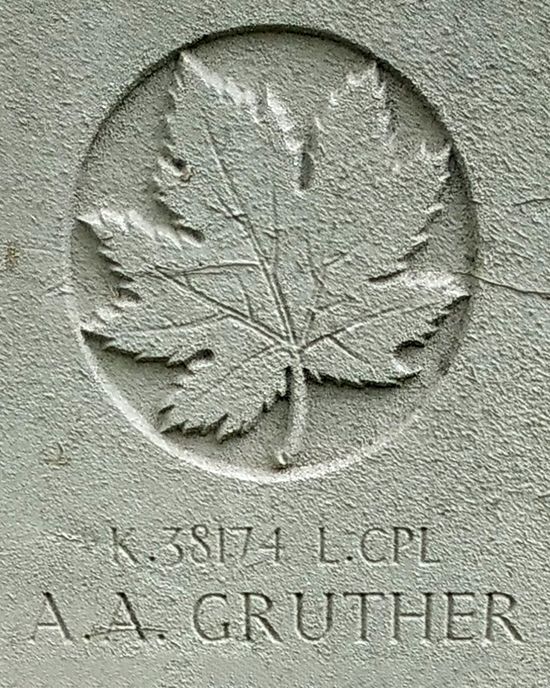27th Canadian Armoured Regiment (The Sherbrooke Fusiliers Regiment)
Het 27ste Canadian Armoured Regiment, the Sherbrooke Fusiliers Regiment, was oorspronkelijk gevormd in 1940 als een infanterie eenheid. In 1942 werd het omgevormd tot een pantser eenheid en maakte samen met de 1ste Hussars Regiment en The Fort Gary Horse deel uit van de 2de Canadese Pantser Brigade.
Het was dit regiment dat op 8 augustus 1944 in Normandië de beruchte Duitse tankcommandant Michael Wittmann, ook wel bekend als de “Zwarte Baron”, wist uit te schakelen.
Het regiment was op 6 juni 1944 in Bernière sur Mèr, Normandië, Frankrijk, geland en maakte de hele opmars door noord-west Europa mee. Het regiment was in het Noord Duitse Emden toen de bevrijding werd uitgeroepen op 8 mei 1945, VE day.
Slechts 1 Sherman tank van dit regiment wist dit hele traject ongeschonden mee te maken. De tank had de naam "Bomb" omdat hij deel uitmaakte van het B-squadron waarvan alle tanknamen met een "B" begonnen.
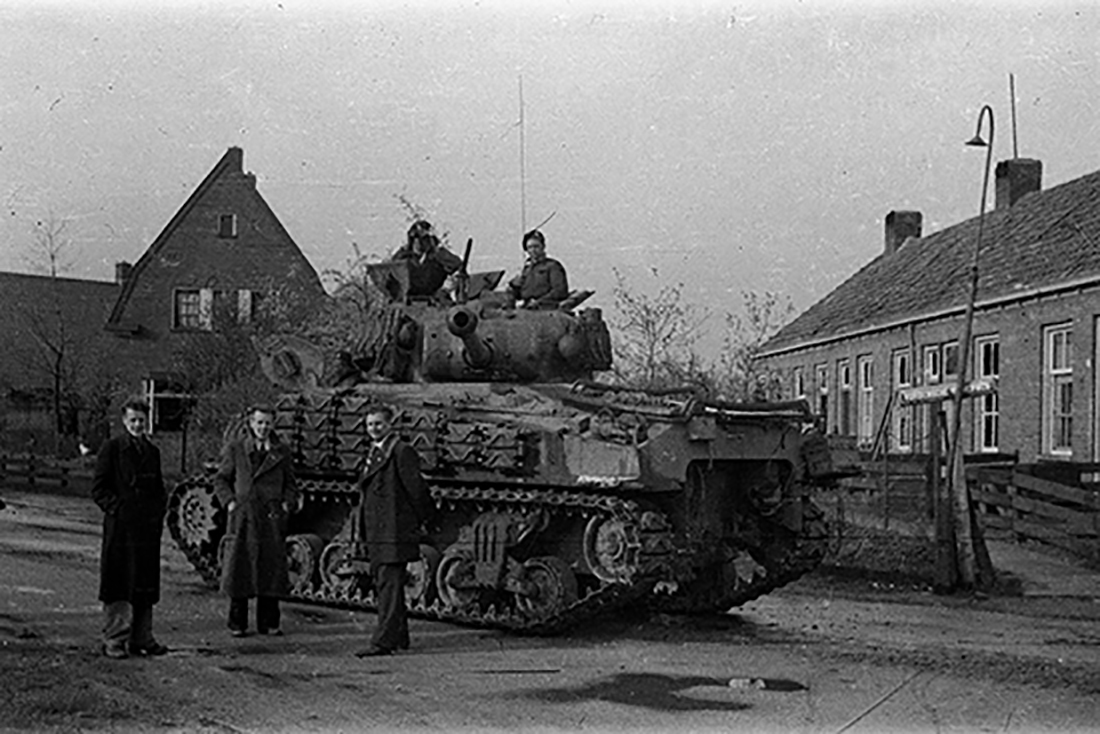
Tank van de Sherbrooke Fusiliers op de Vordensebinnenweg in Warnsveld op 5 april 1945 (foto: regionaal archief Zutphen)
Op 4 april 1945 was dit regiment actief bij de bevrijding van Leesten en op 6 april 1945 ondersteunde het de hoofdaanval op Zutphen, die samen met Le Regiment de la Chaudière en het North Shore (New Brunswick) Regiment werd ingezet.
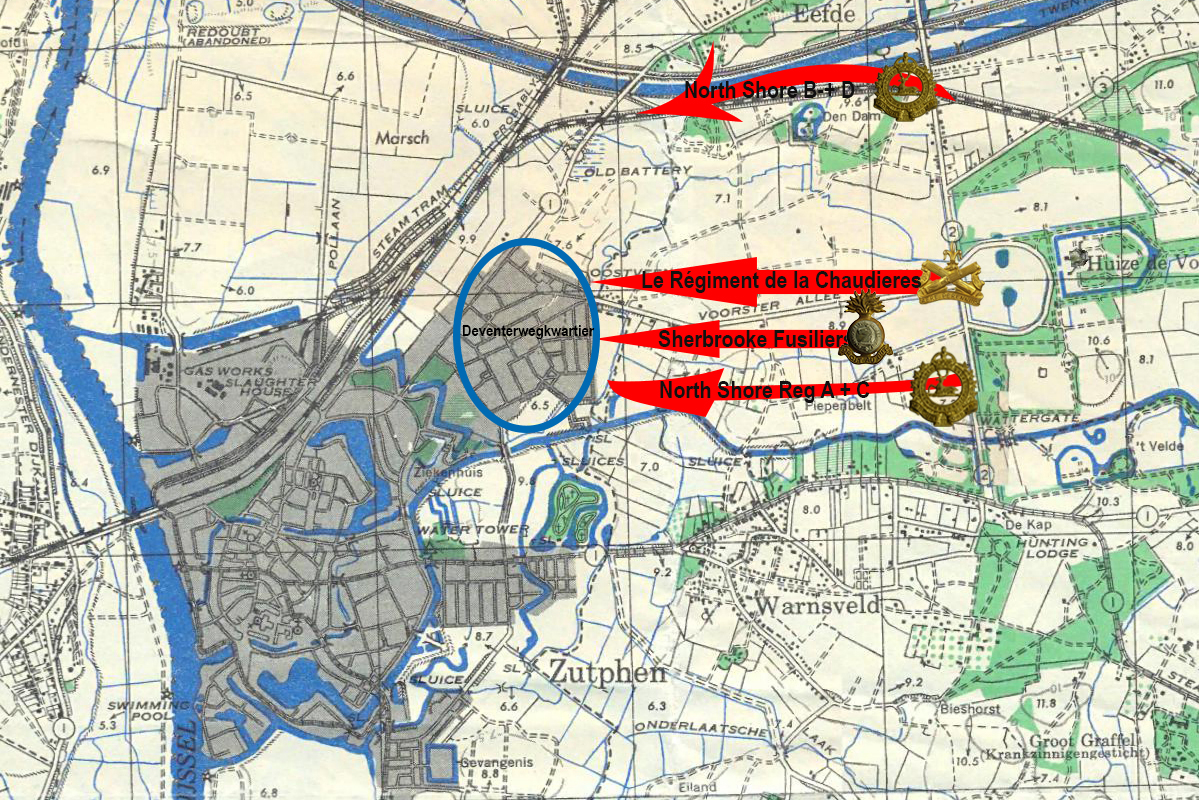
De hoofdaanval op Zutphen vanuit het oosten van de stad op 6 april 1945 (foto: Harm Kuijper)
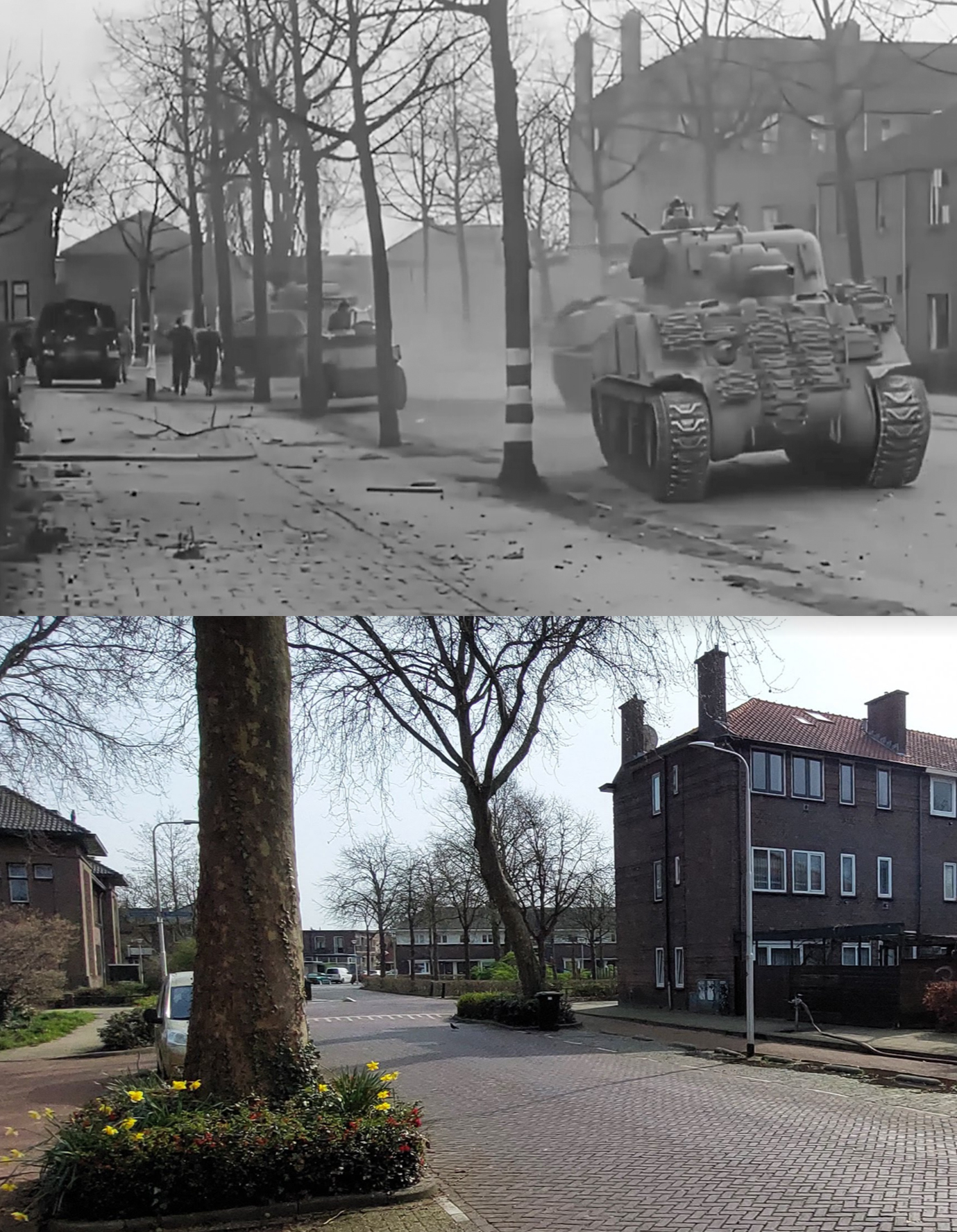
De tanks van de 27th Canadian Armoured Regiment (The Sherbrooke Fusiliers Regiment) rollen door de Heeckerenlaan in Zutphen op 6 april 1945. Het regiment verloor Sergeant Atkinson kort voor het maken van deze foto
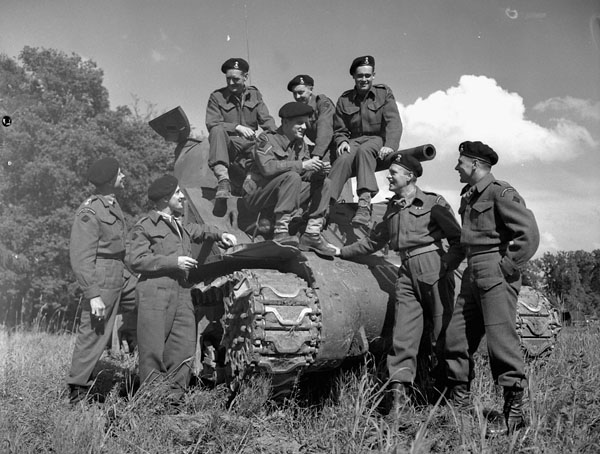
Op 8 juni 1945 kwam een reporter en fotograaf naar Zutphen, waar het regiment inmiddels weer was teruggekeerd, om een verslag te maken van deze bijzondere tank: "Bomb" (Bron: Library and Archives Canada)
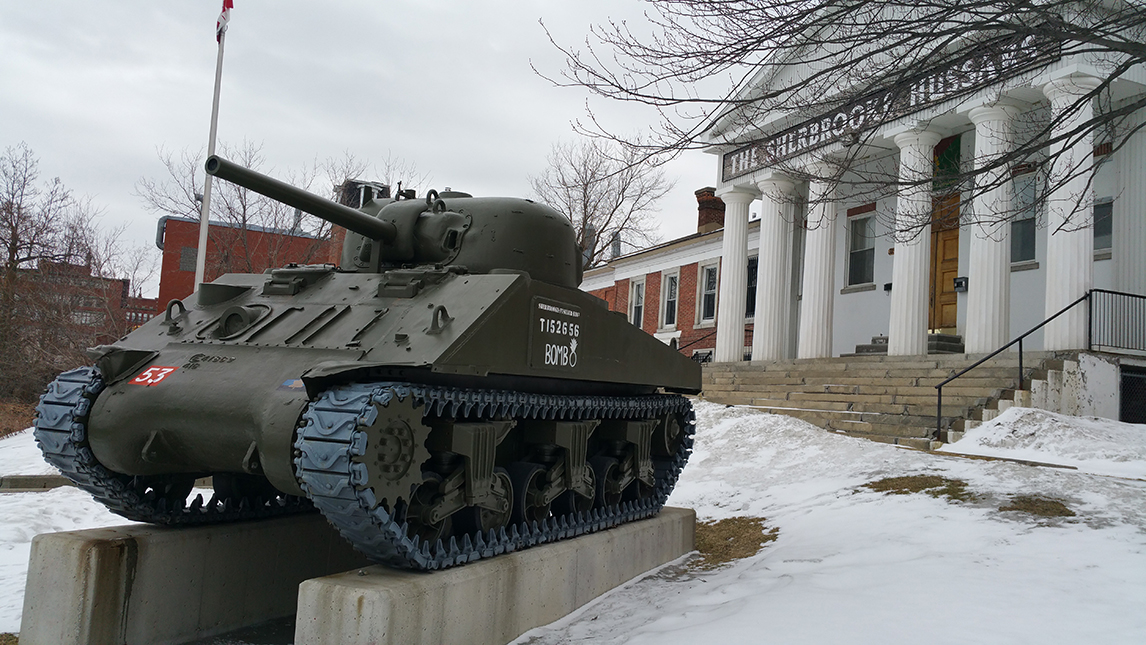
Na de oorlog werd "Bomb" teruggevonden op een Belgesche sloperij en werd overgebracht naar Canada waar hij gerestaureerd werd. Tegenwoordig staat hij er weer netjes bij voor de kazerne in Sherbrooke, Quebec, Canada.(Bron: Battle Field Tours)
Bij de strijd rond Zutphen sneuvelden 2 leden van dit regiment.

The 27th Canadian Armoured Regiment, the Sherbrooke Fusiliers Regiment, was originally formed in 1940 as an infantry unit. In 1942 it was converted into an armoured unit and together with the 1st Hussars Regiment and The Fort Gary Horse it formed part of the 2nd Canadian Armoured Brigade.
It was this regiment that managed to eliminate the German Panzer ace, tank commander Michael Wittmann, also known as the "Black Baron", on August 8, 1944 in Normandy.
The regiment had landed at Bernière sur Mèr, Normandy, France on June 6, 1944, and made its way through northwestern Europe. The regiment was in Emden in Northern Germany, when liberation was declared on May 8, 1945, VE Day.
Only one Sherman tank of this regiment managed to survive this entire route unscathed. The tank was named "Bomb" because it was part of the B squadron whose all tank names started with a "B".

Sherbrooke Fusiliers in contact with civilians at the Vordensebinneweg in Warnsveld on April 5 1945 (photo: Regionaal Archief Zutphen)
On 4 April 1945 this regiment was active in the liberation of Leesten and on 6 April 1945 it supported the main attack on Zutphen, which was launched together with Le Regiment de la Chaudière and the North Shore (New Brunswick) Regiment from the east of the city.

The main attack on Zutphen from the east of the city on April 6, 1945 (photo: Harm Kuijper)

The tanks of the 27th Canadian Armored Regiment (The Sherbrooke Fusiliers Regiment) that roll through the Heeckerenlaan in Zutphen on April 6 1945. The regiment lost Sergeant Atkinson shortly before this photo was taken

On June 8, 1945, a reporter and photographer came to Zutphen, where the regiment had meanwhile returned, to make a report of this special tank "Bomb" (Source: Library and Archives Canada)

After the war "Bomb" was found at a Belgian scrap yard and transferred to Canada where it was restored. Today he is in good shape again in front of the barracks in Sherbrooke, Quebec, Canada. (Source: Battle Field Tours)
During the battle around Zutphen, 2 members of the regiment were killed.
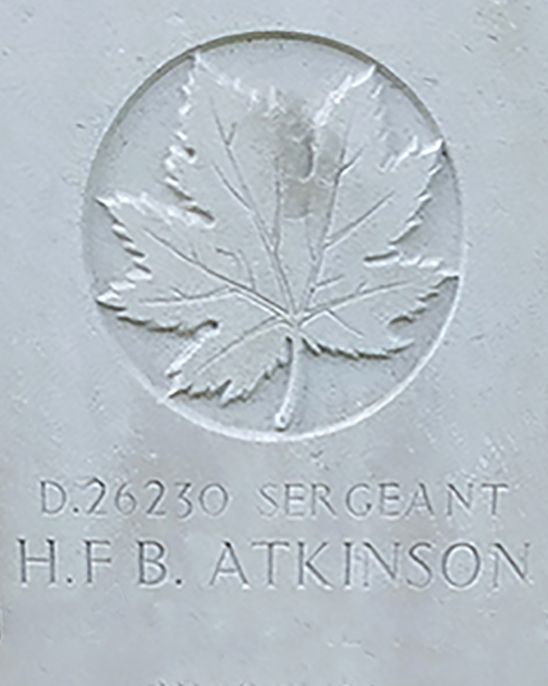
Atkinson, Hubert Fenton Booth
